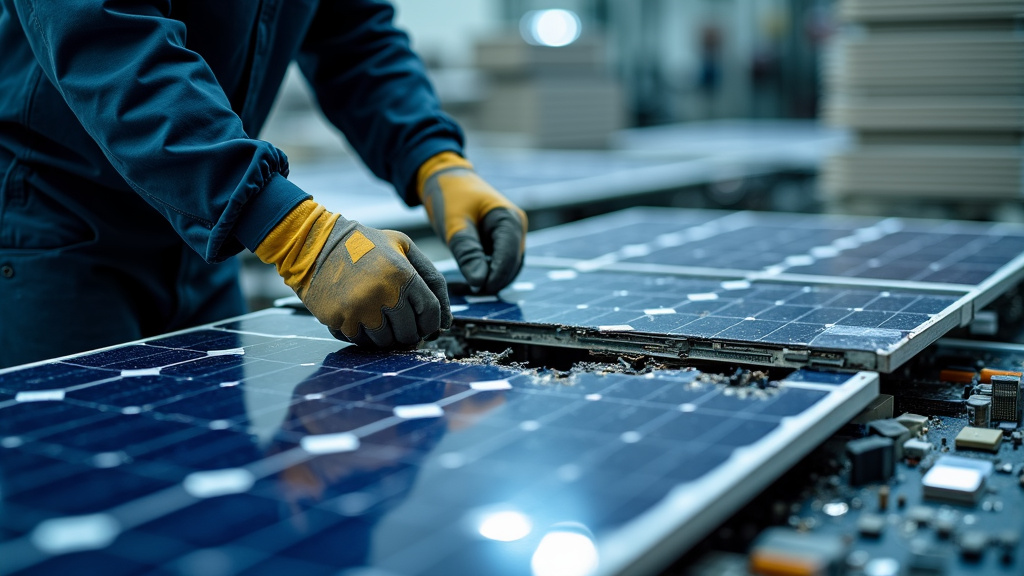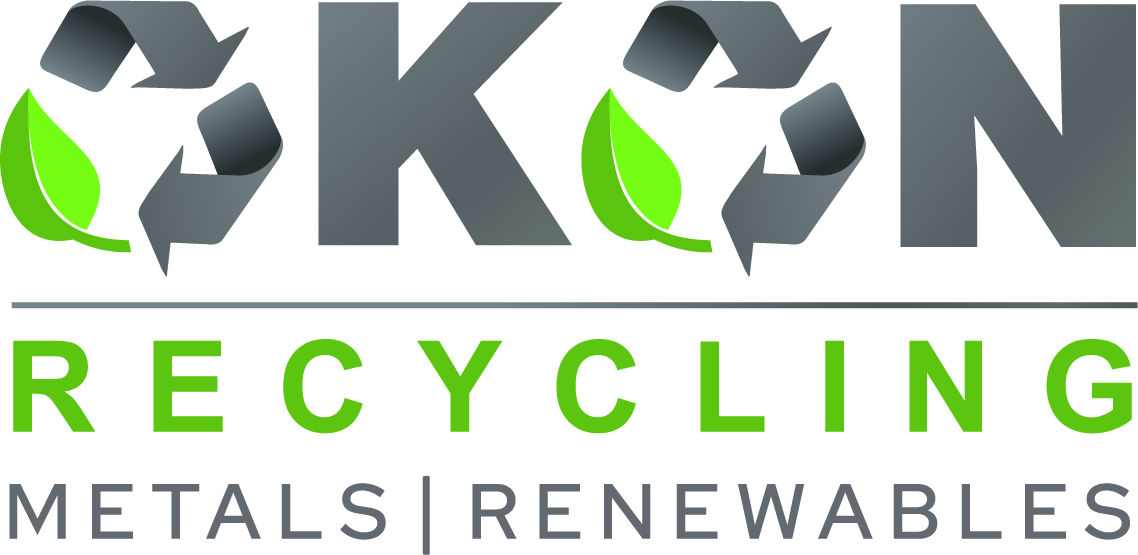5901 Botham Jean Blvd, Dallas, TX 75215
What Are Solar Panel Waste Reduction Strategies?
April 18, 2025By 2050, our world will face a mounting crisis of 80 million metric tons of discarded solar panels—enough to fill nearly 8,000 Olympic swimming pools. As photovoltaic (PV) technology transforms our energy landscape, this growing waste stream represents the darker side of renewable energy’s success story.
Adoption rates continue to climb, with solar accounting for 67% of new electricity-generating capacity in the first half of 2024 in the US alone.
Solar panel waste reduction strategies represent our critical response to this looming challenge. These approaches aim to minimize environmental impact and recover valuable materials from end-of-life panels. Currently, recycling methods remain largely underdeveloped and economically challenging, with recovery processes struggling to efficiently extract valuable components like silver, silicon, and glass.
The urgency of developing effective waste reduction solutions cannot be overstated. With the first generation of solar panels installed in the 1990s now reaching the end of their approximately 30-year lifespan, we stand at the precipice of a waste management challenge that demands immediate innovation.
What are the Current Recycling Practices and Limitations?

Most recycling processes for solar panels currently focus on removing the aluminum frame and glass cover, which together comprise over 80% of a panel’s mass. Mechanical recycling, the most common method employed today, involves shredding panels to separate these bulk materials. Companies like Veolia, which operates Europe’s first dedicated solar recycling plant, achieve impressive recovery rates of up to 95% for glass and 80% for aluminum through these processes.
However, this approach falls critically short when it comes to recovering the most valuable components hidden within the panels. Silicon cells, silver contacts, and other precious materials—which account for approximately two-thirds of a panel’s monetary value—often remain trapped in the waste stream. Silver alone constitutes about 47% of a silicon panel’s material value yet is currently recovered at dismal rates of just 20-30%.
The technical challenges in recovering these high-value materials stem from their complex integration into the panel structure. Silicon cells are typically encapsulated in ethylene-vinyl acetate (EVA), a durable polymer that requires temperatures exceeding 500°C to break down. This encapsulation makes separating the silicon and attached silver contacts extraordinarily difficult without specialized processes.
Current recycling technologies attempt to address these challenges through thermal and chemical methods, but each carries significant drawbacks. Thermal recycling uses pyrolysis to burn off EVA and enable silicon recovery, but these processes are highly energy-intensive and generate harmful emissions. Meanwhile, chemical recycling methods that use acidic or alkaline solutions to isolate semiconductor materials produce hazardous wastewater, creating new environmental problems while attempting to solve others.
The economic viability of solar panel recycling is severely hampered by these technical limitations. Without efficient recovery of silver, silicon, and other valuable metals, the recycling process often costs more than it returns in recovered materials. This unfavorable economic equation frequently leads to suboptimal outcomes, including incineration of potentially valuable components or disposal in landfills, where toxic elements can potentially leach into the environment.
The shortfall in current recycling capabilities represents both an environmental and economic missed opportunity. With global solar panel waste projected to reach 78 million metric tons by 2050, the industry urgently needs technological breakthroughs to transform end-of-life panels from a waste management challenge into a valuable secondary resource stream.
What Innovative Approaches are Being Developed?
The solar industry is rapidly developing groundbreaking recycling technologies to address the mounting challenge of end-of-life solar panels.
Thermal processing represents is a cutting-edge approach gaining traction in the industry. This technique uses precisely controlled heat to separate the different layers and materials in solar panels without contamination. When applied correctly, thermal methods efficiently isolate silicon components while minimizing energy consumption—a critical factor in making the recycling process itself environmentally sustainable.
Chemical treatments complement thermal approaches by targeting specific materials that are otherwise difficult to extract. Advanced chemical processes can separate high-value metals like silver from other components, substantially improving recovery rates. Researchers continue to refine these methods to reduce chemical usage and ensure all byproducts can be safely processed or neutralized.
What Strategies Can Reduce Solar Panel Waste?
Lifecycle Evaluation Approaches
Implementing comprehensive lifecycle evaluations stands as a foundational strategy for minimizing solar panel waste. By thoroughly assessing each phase from material sourcing to end-of-life disposal, manufacturers can identify critical points where waste generation occurs. This proactive approach allows for modifications in design and production methods that significantly extend panel lifespans.
End-of-life strategies must be incorporated into the initial design process rather than considered as an afterthought. Companies like First Solar demonstrate this principle by involving their recycling teams during the design phase. As noted by their director of sustainable development, “We can get involved not only at the end of the life, but at the beginning of life at the design phase,” ensuring updates don’t negatively impact the recycling process later.
By designing panels with dismantling and material recovery in mind, the industry can dramatically reduce waste volumes headed to landfills. This circular thinking transforms what was once considered disposal material into valuable resources for the next generation of solar technology.
Specialized Recycling Partnerships
Establishing partnerships with specialized recycling facilities creates efficient pathways for reclaiming valuable materials from decommissioned panels. The potential value is substantial – globally, an estimated 86 million tons of photovoltaic waste will be generated by 2050, representing approximately $15 billion worth of recoverable materials including precious metals, rare earth elements, aluminum, and glass.
The recycling process involves separating panels into their component materials, with the main recyclable parts being glass (approximately 70% of panel weight), aluminum (19%), copper, and semiconductor materials. Advanced recycling systems can recover these materials at commercial scale, directing them back into manufacturing streams both within and beyond the solar industry.
First Solar’s approach demonstrates recycling viability, with some recovered materials flowing back into new PV panels while others find purpose elsewhere – recycled glass goes to various manufacturers, and recovered encapsulant material is repurposed for rubber products. This practical reuse creates circular material flows that reduce environmental impacts across multiple industries.
Extended Producer Responsibility Programs
Extended Producer Responsibility (EPR) programs represent a policy approach gaining significant traction in sustainable solar panel management. These programs ensure that manufacturers bear responsibility for the entire lifecycle of their products, including end-of-life collection and recycling. Washington state pioneered this approach in the U.S., passing the first state solar panel EPR law in 2017, which requires manufacturers to fund collection and recycling for large photovoltaic installations.
EPR programs create powerful incentives for designing more sustainable products and building robust supply chains for recycled materials. The Washington model, set to take full effect in 2025, mandates that 87% of each solar panel must be recycled – a requirement that will drive recycling markets just from the aluminum and glass components alone.
The European experience offers a precedent, with solar panel EPR mandated under the Waste Electrical and Electronic Equipment Directive since 2013. This regulation includes specific requirements for collection quantities and material recovery percentages, providing a framework that U.S. recyclers and policymakers can learn from as similar programs develop domestically.
[[artifact_table]] Material Recovery Potential from Solar Panel Recycling [[/artifact_table]]Manufacturing Process Improvements
Significant waste reduction opportunities exist within the solar panel manufacturing process itself. By improving production techniques and rethinking material formulations, manufacturers can minimize waste generation before panels even reach consumers. This includes exploring ways to reuse manufacturing byproducts like silicon dust that would otherwise be discarded.
Manufacturers can implement cleaner production methods that reduce hazardous material usage, such as limiting cadmium and lead content that can contaminate soil and groundwater when improperly disposed of. Some forward-thinking companies are already working to eliminate expensive, rare, or environmentally harmful materials from their panel designs altogether.
Industry standards and certifications are emerging to guide these improvements. Organizations like Sustainable Electronics Recycling International are developing certification standards specifically for solar panel recycling, with draft regulations expected to provide clear guidelines on responsible material management throughout the production and recycling process.
Conclusion: The Future of Solar Panel Waste Management

As the solar energy industry continues its remarkable growth trajectory, the imperative for effective waste reduction strategies has never been more critical. The sustainability of solar power ultimately hinges on our ability to manage end-of-life panels responsibly.
By embracing innovative recycling technologies, prioritizing material recovery processes, and implementing comprehensive lifecycle management approaches, the industry can significantly minimize its environmental footprint while preserving the core benefits that make solar energy so attractive.
The path forward requires ongoing collaboration between manufacturers, recyclers, and policymakers to develop standardized collection systems, improve recycling efficiency, and establish supportive regulatory frameworks. Only through these united efforts can we ensure solar energy remains a truly sustainable choice for our planet.
For businesses and municipalities seeking guidance on responsible management of solar panel waste, contact Okon Recycling at 214-717-4083.
